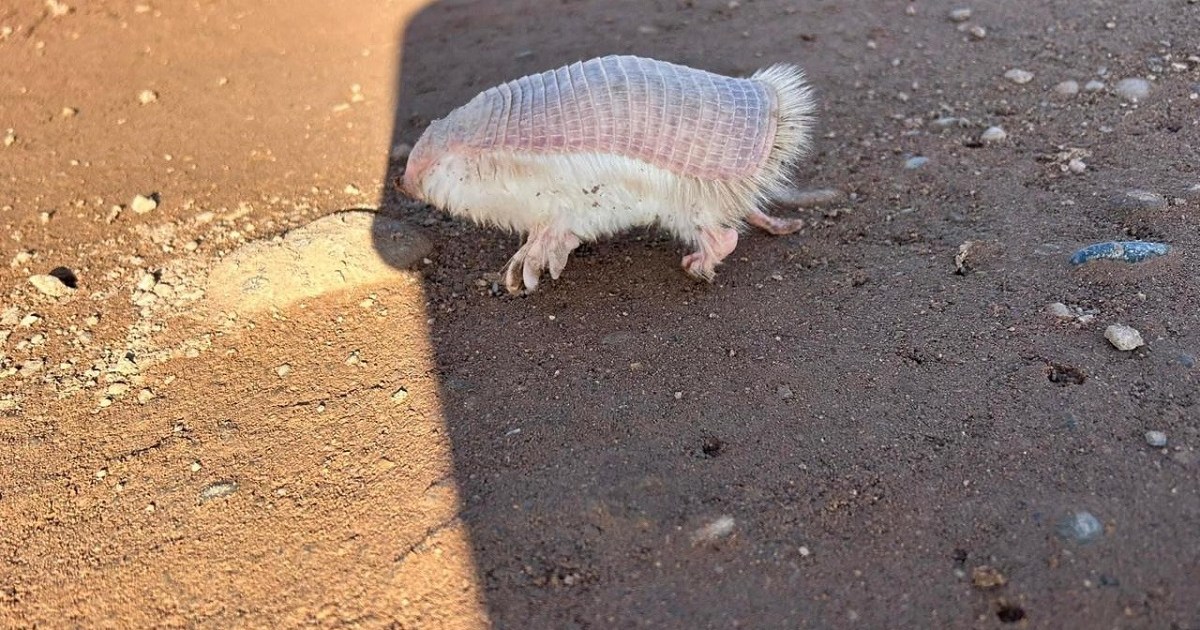The fauna of the province of Neuquén It is characterized by its richness and diversity, although in recent years, with the advancement of human activities, some specimens have been affected to the point of being in danger of extinction. This is the case of pichicior pink fairy armadillo, which was seen this Thursday in the area of yearn, to the surprise of its inhabitants. The find was recorded by a neighbor of the sector and quickly went viral on social media.
“I am a lucky person this morning I saw for the first time and you can sign the (pichiciego) here in Añelo,” he said. Hugo Reguerothe user who shared the images of the animal on his Facebook account.
The pampas pichiciego, scientifically known as Chlamyphorus truncatusmeasures just over 10 centimeters and spends much of his life digging undergroundfeeding on ants, worms and some larvae.
It stands out, among other things, for its particular pink shellin addition to his soft white hair.
His presence in the steppe of Añelo drew attentionsince despite the fact that it inhabits the area, being able to observe it, and much more to record it, it is especially difficult. It is a specimen susceptible to stress and, in general, does not usually tolerate encounters with humans.
In the images, which soon went viral, the small animal could be seen conspicuously a few meters from the neighbor, who did not hesitate to take out his cell phone and video record the unexpected finding.
They found an animal rarely seen in Añelo: the dangers faced by the pichiciego
Despite the fact that it inhabits a wide strip of the country, which goes from the north of Patagonia to the province of Catamarca, little is known about the population of the pichiciego. However, in recent times, some productive activities such as livestock and intensive agriculture, affected their habitat, already delicate.
Besides, the collection of specimens to keep them as pets or sell them on the black market, It has also endangered the speciesbecause it cannot survive more than seven or eight days in captivity.
